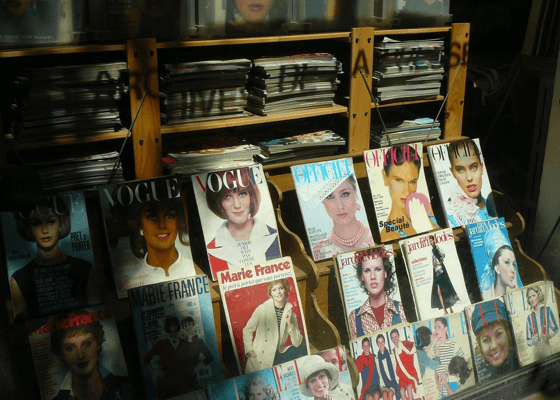FAQ: How to Use Simple Audio Ads to Build Your Business
Audio ads are everywhere now. Podcasts, smart speakers, audio search, music streaming services and of course traditional radio all use audio ads.
Digital audio advertising space is projected to grow by 8% in just the next year. And some studies indicate that audio ads are, believe it or not, MORE effective than any other form of media.
Pandora commissioned a study that demonstrated long term memory is 49% better than traditional radio when audio ads were integrated with participants’ personal music playlists.
And thanks to the affordability of professional grade recording equipment as well as the variety of digital platforms that now host audio ads, it’s never been easier to get your message heard.
“Where Can I Distribute My Audio Ads?”
Just about anyplace people are listening without viewing.
Podcasts
You can run your ad on podcasts or become the sponsor for a specific podcast. Podcast ads can be distributed through all of the major audio streaming platforms, including Spotify, iTunes, Amazon Podcast, Pandora, Stitcher, SoundCloud, Podbean, Buzzsprout, Google Podcasts and many others.
According to Edison Research, podcast listeners often take action in direct response to hearing a sponsorship message or advertisement during a favorite podcast, including:
Visiting a sponsor’s web site (45%)
Considering a new product or service (42%)
Gathering more information about a product or company (37%)
Alexa Skills / Google Home Action Audio Streaming
Flash briefings are essentially audio advertising on Amazon Echo devices and a great way to reach your market. You could also have create, sponsor or advertise on an Alexa Skill or Google Assistant Action.
Music
You can run your audio ads between music selections on audio streaming platforms like Spotify, Apple Music and Pandora.
Audio Blog Posts
You can embed your own audio ads within your audio blog posts as well as within your own podcast.
YouTube
Many people use YouTube to stream music. And while YouTube Premium allows users to have an ad free experience, the rest are going to hear your audio ads.
WordPress
You can embed audio files into your website or a partner’s site through WordPress or other website hosting platforms.
“But Why Would I Use Audio Ads?”
Long story short, because it works.
Audio ads are proven to be more effective than traditional radio ads. Traditional radio is trying to reach a large, broad audience while sites like Pandora are tailored to reach specific listeners. You can even customize your ads with the exact type of music your market is listening to.
And podcasts are even more specific. For example, if you have a product for gardeners, then advertising that product on a gardening podcast is a no-brainer.
Audio streaming platforms can send traffic directly to your site. The right ad to the right audience with a simple URL can result in a steady stream of highly targeted listeners as they tune in to their favorite audio channels.
And you get instant credibility for your offer because it’s coming to listeners from a podcaster or service they know and trust.
“How Do I Create Audio Ads?”
Your first step is to start with a great script because everything else you’ll need for the ad will be dictated by the script you write.
If you’re like me, this is the step that gives you pause. When you write a book, you can use all the pages you need. When you write an article, it can be as long as you like. But when you write an audio script, every single word must count. Think of it as writing a super short sales letter that will be read out loud and you’ve got the idea.
Here’s how to go about writing your script:
Step 1: Decide what you want the listener to do. Do you want them to visit your opt-in page to join your mailing list? Visit your homepage? Go to your sales page? Join you on a social media page?
Ideally, it’s best to entice them with either a free offer or a major discount on a product that is super easy to explain and sell.
If it’s a free offer, then make it something that sounds like it has enormous value. Ideally it needs to solve a problem your ideal customer is having.
If it’s a major discount on a super easy to explain product (remember, you only have a minute or less to explain) then be direct about your offer, the time sensitive nature of it, and why they need to grab it right now.
Here is a 20-30 second example that is 100% off the top of my head, but it will give you an idea:
“Are you always tired? Do you wish you had more energy to get more things done and enjoy your day? Over 5,000 people have given our XYZ Super Energy Vitamins a five star review and now you can try them for free when you cover the shipping, today only, here’s the URL. They give you tons of natural energy without the jitters and we’re so confident you’ll love them that we’ll send you a bottle for free, here’s that URL again.”
You get the idea. Knowing the action you want your listeners to take will set the tone for the script you’re going to write.
Step 2: Choose the length of your ad. The average Spotify, Apple Music and Pandora ad is 30 seconds long. But some audio streaming platforms run ads up to 60 seconds long. The length of your ad will determine how much information you can fit into it.
Step 3: Set the tone. While you always want to sound like you’re having a conversation with the listener rather than talking at them, you can choose the tone of your message. Is it confidential? Friendly? Excited and enthusiastic? Academic?
Are you using a male or female voice? Young, middle aged or older? Will you use any sound effects?
Think of how your ideal prospect communicates and then choose a style that will resonate with them.
Step 4: Use a call to action to tell your audience exactly what you want them to do. If you want them to go to a URL, keep it short, catchy and easy to spell. For example, www.ILoveCats.com is easy to remember, while www.KathyMacyCatSite/freeoffer.com isn’t memorable, it’s too long, there are multiple ways to spell Kathy Macy and the forward slash is going to confuse some people.
Okay, those are the basics just to get you started. But simply conveying your information in the ad isn’t enough. You’ve got to grab the listener’s attention and hold it by making your ad compelling.
Ideally, your ad should be as interesting as the content of the podcast or the music stream where it appears. In fact, it needs to be even more compelling.
Think of the last time you heard a commercial and you were annoyed when it ended because you wanted to know even more about the product. I know this only happens rarely, but it DOES happen, and that’s the exact reaction you want when your ad hits the ears of your ideal prospects.
“Easy for you to say, but how do I make my audio ad compelling?”
There are three things that make an audio ad compelling: Brand Voice, Mood and Emotional Connection.
Brand Voice: Depending on your brand, you might use humor, cheeky language, a no-nonsense serious approach, motherly love, a professorial tone or whatever speaks to your brand.
It could be that your brand is new and you’ve never recorded any audio for your brand. You don’t know what your voice is yet. If that’s the case, then now is the time to choose your voice.
Imagine your ideal prospect. Who would be the best person to tell them about your product? Would it be a peer? A parental figure? A professional?
If in doubt, choose a peer or a teacher. A peer is someone they can easily relate to because it sounds like them. “I had this exact problem and here’s what I did.” And a teacher is someone who is showing them how to solve their problem. “We’ve shown hundreds of people how to fix this problem or achieve this goal, and now we’d like to show you how you can achieve this in no time at all, too.”
Mood: Music and sound effects can be used to create almost any mood. Imagine you sell meditation recordings. Your ad might start with the sounds of multiple voices, phones ringing, noisy street traffic and so forth. Then you juxtapose that with the sound of a quiet stream with birds singing in the distance.
What a great demonstration of how meditation reduces stress, and you haven’t even added your script yet.
Emotional Connection: The right person reading your script will make all the difference in creating the right mood, and when you find just the right voice for your ad, you’ll know it.
You might have to listen to 50 or a hundred samples from voice-over artists before you find the right one. Don’t overanalyze why you react as you do. Simply realize that if a voice-over delivery has caused to you sit up and take notice, then it will likely do the same for your audience.
Casting the right voice is both an art and science. On the one hand you don’t want to over think it. But do realize that the voice you choose, if it works out, will be the voice you continue to use for a long time to come.
When you nail all three of these – Brand Voice, Mood and Emotional Connection – you’ve got an ad that can potentially build your entire business for you and maybe even earn you a fortune.
Put yourself in the listener’s shoes as you create your ad and you’ll do fine.
“Okay, I’m almost ready to sit down and write my first ad. Any tips before I start?”
Oh my yes, I have several tips for you:
1: Keep your audio ad simple. Giving your listener 5 things or even 3 things to remember is asking too much of them.
Your listeners are multi-tasking. Choose one important message and then focus 100% of your efforts on conveying that message in a catchy, memorable way.
2: Lead with the most important information. Cut to the chase and let them know immediately why they should keep listening. “Hello, my name is Jane Smith and I run Hair Grow for Men” is not cutting to the chase.
Instead, say something like, “Are you tired of losing your hair?” or “Would you like to stop losing your hair and start growing a full head of hair immediately?” Either one of those is going to catch the attention of anyone who is experiencing hair loss and they are going to listen very closely to what else you have to say.
3: Make your ad conversational and friendly. Even if you’re appealing to academics and engineers, and even if you’re selling funeral plots or investing advice, you still want your ad to be conversational and friendly in tone.
Choose a voice-over artist who speaks clearly and in a conversational manner.
4: Pronunciation and pacing are important. Have you ever been watching a movie when a character said something you didn’t catch? Or they spoke so slowly or so quickly you missed the meaning?
To make your ad sound conversational, you’ll want to use less copy rather than more. Too much copy in too little time and it sounds like a pitch rather than a conversation.
Most voice-over artists are professionals who understand they need to enunciate clearly, pronounce words correctly and pace their speech to make the listener’s job easy. But you still need to have a few people listen to the ad and make sure they clearly understand it before you use it. Because you know the script by heart you might not realize if there is a word or two that doesn’t come across clearly, which is why you want to test the ad with people who were not involved in making the ad.
I’m reminded of a documentary narrated by Benedict Cumberbatch. He’s a famous actor whose been in numerous movies and shows, and yet he completely mispronounced the word, “penguin” numerous times in the documentary.* Even the best of the best can make mistakes, and you need to catch them before your ad is broadcast.
5: Dial down the background music. We’ve all heard ads where the background music is too loud and the words are too soft. It’s better to err on the side of making the music too soft because at least then your words will be heard.
While we’re on music, be sure that if you are going to use music that you have the right to do so. License a track from a music provider that represents your brand and matches the style of the voice talent.
Create a smooth transition at the beginning and end of your ad. Remember that your ad will be sandwiched between other content. Don’t use a pause at the beginning or end because this will sound like dead air. Don’t use a long fade out, either. Make your start and end clean and clear.
One last thing… remember to make your call to action clear. There’s no sense running audio ads if you don’t get results, and your best results will come from clearly stating the benefit to taking action and then telling them exactly how to take that action.
61% of audio audiences keep listening through the ads, according to a new Audacy report. Compare that to TV, where around three-quarters of viewers admit to tuning out ads by grabbing their phones, laptops or tablets.
Entire businesses can be built using nothing more to drive traffic than audio ads. Better still, integrate audio ads into your traffic driving schemes to supplement your other traffic sources. Track everything, figure out which ads and ad placements are bringing you the most profitable traffic, and increase those ads for maximum profits.
Want to learn more about making audio ads? Spotify Advertising Academy offers free online courses and certifications to help you create, optimize and measure effective digital audio campaigns.
https://advertisingacademy.byspotify.com/student/catalog
*Benedict Cumberbatch Can’t Say ‘Penguins’ – The Graham Norton Show























